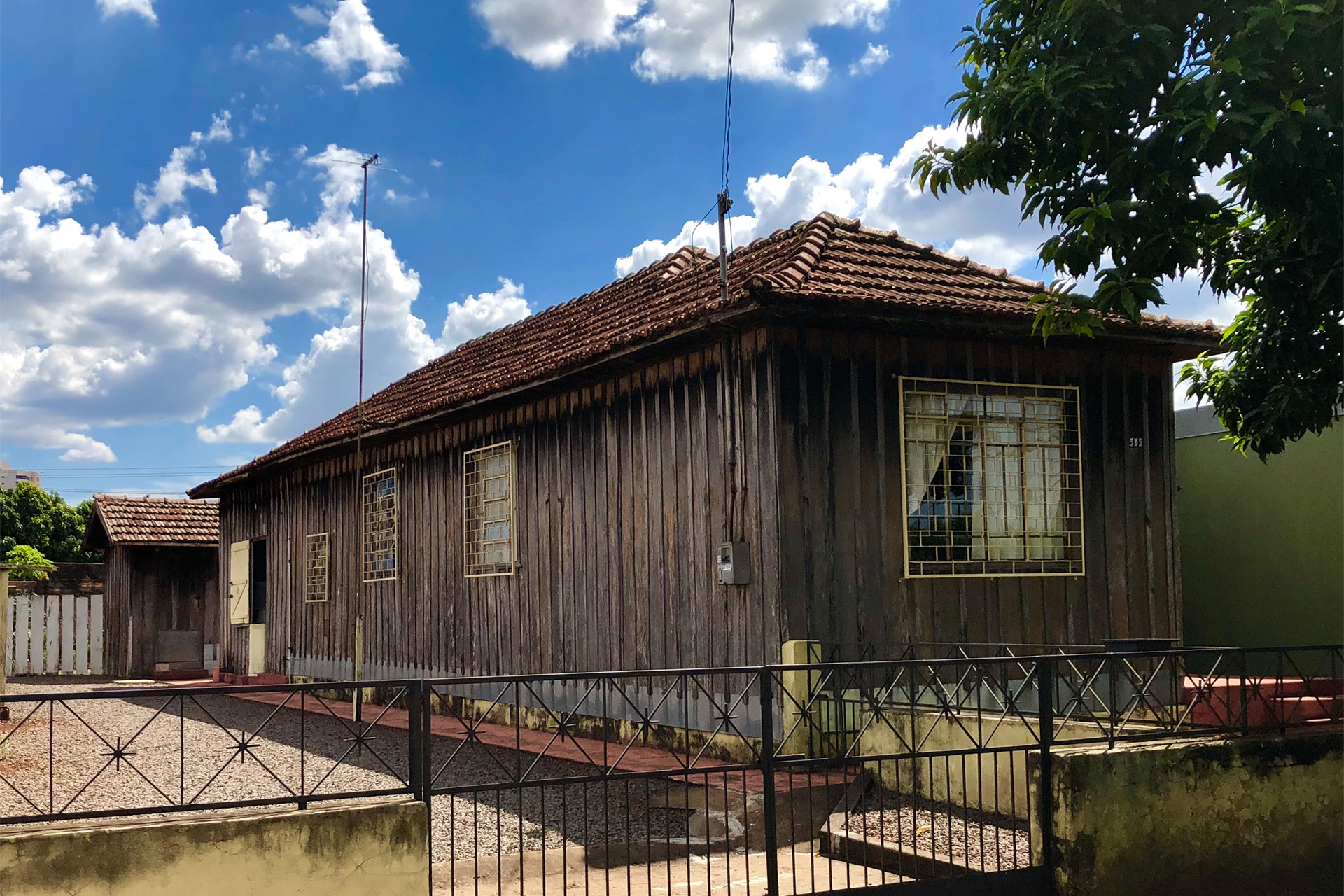The Story Behind the S2 Special Semi-Hollow Reclaimed Limited Edition!
23 Sep 2025

In 2017, we introduced a limited run of guitars that sold out nearly overnight. The "Reclaimed Limiteds" as they were known, featured unique reclaimed Brazilian woods. Now in 2025, we're excited to announce that the "Reclaimed Limited" series is back - this time on a new model, with additional woods, and a new story to tell.
Featuring reclaimed and salvaged woods from South America and the Caribbean, the S2 Special Semi-Hollow Reclaimed Limited Edition pairs head-turning looks with one of our most versatile electronics layouts. The S2 Special Semi-Hollow has become a staple for players on stage and in the studio due to its hum/single/hum pickup configuration, a 5-way pickup switch, and two mini-toggles for 12 total sound combinations.
Act quickly, this run is being released in a limited quantity of 700 pieces. Locate your local PRS dealer here.
To tell the story behind this new edition of the popular "Reclaimed Limited" platform, we interviewed PRS Senior Wood Buyer Michael Reid, who has been purchasing wood for Paul Reed Smith for more than 45 years.
Q&A with Michael Reid // PRS Senior Wood Buyer
How long have you worked as a Wood Buyer with Paul / PRS Guitars?
Michael: I met Paul in October of 1980 shortly after he had received his first commission from Carlos Santana. Carlos wanted a flame maple top solid body guitar, similar to the one Paul had recently made for Howard Leese. Unfortunately, Paul didn't have the maple he needed to build the guitar. A local wood dealer, who Paul had been buying rosewood from, knew of me and knew I had been building period furniture reproductions using curly maple. He mentioned to Paul that I might have what he needed for Santana's guitar and to give me a call. We've been close friends ever since and in 1987 I began my "official" employment with PRS.

^ PRS Senior Wood Buyer Michael Reid atop lumber at a sawmill circa 1985.
What inspired this newest run of "reclaimed" instruments?
Michael: The inspiration for this run and the first Reclaimed LTD run we did in 2017 grew out of an experience I had sourcing reclaimed wood from abandoned farm houses in Brazil 20 years ago. In the early 2000's, my wife and I had been planning to build a house in Montana and were interested in using reclaimed woods for that project. A number of years later I was having a random conversation with Jim Cullen (PRS Director of Sales). He asked if I had any recommendations for "new" types of potential guitar woods. I showed him several types of wood that I had used in building my Montana house, and this eventually led to some experimentation with the PRS new products engineering team and ultimately resulted in the first Reclaimed Limited run.

^ (Left) Cuban Mahogany being processed at the sawmill. (Right) Guaribo Preto fretboard blanks machined from foundation posts, as shown behind the pictured planks.
Tell us about each of the woods used in this limited run, how were they sourced and how were these woods traditionally used in their country of origin?
Top Wood // Peroba Rosa
Michael: The peroba rosa used for the top of this guitar is a repeat of the first reclaimed run from 2017. In the south of Brazil, the wood was originally used as house siding and ranges in age from 100 to 150 years old. It varies in color from a light pinkish yellow to a variegated dark pink and purple. It was purchased from a reclaimed wood dealer who buys abandoned houses and dismantles them for eventual sale to furniture makers and for use in architectural millwork.

^ An old home in Maua Da Serra, Brazil that features century old peroba rosa siding, the same wood species used in the tops of the S2 Reclaimed Special Semi-Hollow Limited Edition models.
Fretboard // Guaribu Preto
Michael: The guaribu preto, used to make the fretboard on this guitar, was cut from hand-hewn beams that served as foundation posts and support beams in traditional Brazilian fazendas, or farm houses. The age of the wood is also between 100 and 150 years old. It is hard and durable with a consistent dark brown to purple color and is ideal for making guitar fretboards because of its durability.

Neck // Cuban Mahogany
Michael: The guitar's neck features mahogany salvaged from municipalities and private land owners in Puerto Rico. What led to my sourcing of this salvaged mahogany is actually an interesting story. In 2018, I attended an "Experience PRS" event at the PRS factory where I struck up a conversation with Carlos Narvaez, a PRS fan living in Puerto Rico. The 2018 Experience PRS event was just one year after Hurricane Maria had devastated the island of Puerto Rico.
After initial pleasantries and introductions, I asked Carlos about the hurricane recovery efforts on the island and at some point during our conversation, Carlos made a comment about the enormous quantities of mahogany trees that had blown down during the hurricane that were now being turned into mulch at FEMA sites around the island. Shortly thereafter we planned a visit to Puerto Rico and made a connection with a local saw mill that had been salvaging "Maria wood." The mill has been cutting high quality Cuban mahogany neck blanks for us ever since.

^ PRS Guitars Senior Wood Buyer Michael Reid (left) and Carlos Narvaez (right) inside the PRS wood rough cut area.
Considering the woods are reclaimed, do they show wear? Are all of the tops visually unique?
Michael: In some cases, but not all, the peroba rosa tops will exhibit some surface checking and the occasional small nail holes from their previous use as house siding in Brazil. Preparing the peroba wood for production involved the extraction of thousands of small batten nails along the edges of the boards and the removal of multiple layers of paint. All of this work being done outdoors in the heat and humidity of a Maryland summer wearing a tyvek suit and a heavy respirator.

^ Every peroba rosa top is entirely unique with some featuring small nail holes and weather checking from years of use as home siding in Brazil.
What has been the most rewarding aspect of this new reclaimed project?
Michael: There have been a number of rewarding aspects to this project, ranging from the experience of sourcing some of the wood in a foreign country in a language that was difficult to learn, to the wonderful and lasting friendships that have grown out of the project. However, I think most importantly it has been the overwhelmingly positive response from guitar players worldwide. It is impossible to fool a good guitar player, and the players that own one of the original Reclaimed Limiteds understand that these guitars were not intended as a gimmick, but rather as a serious tool for the serious player.
As a 40+ year wood buyer and PRS employee, what do you love the most about your job?
Michael: The one thing that I love most about being a part of PRS and a friend of Paul's for so many years is summed up best in a quote by Harry S. Truman (and in my opinion this quote is at the heart of the culture at PRS): "It's amazing how much can be accomplished if you are not concerned with who gets the credit."
--
Explore the S2 Special Semi-Hollow Reclaimed Limited Edition here.
